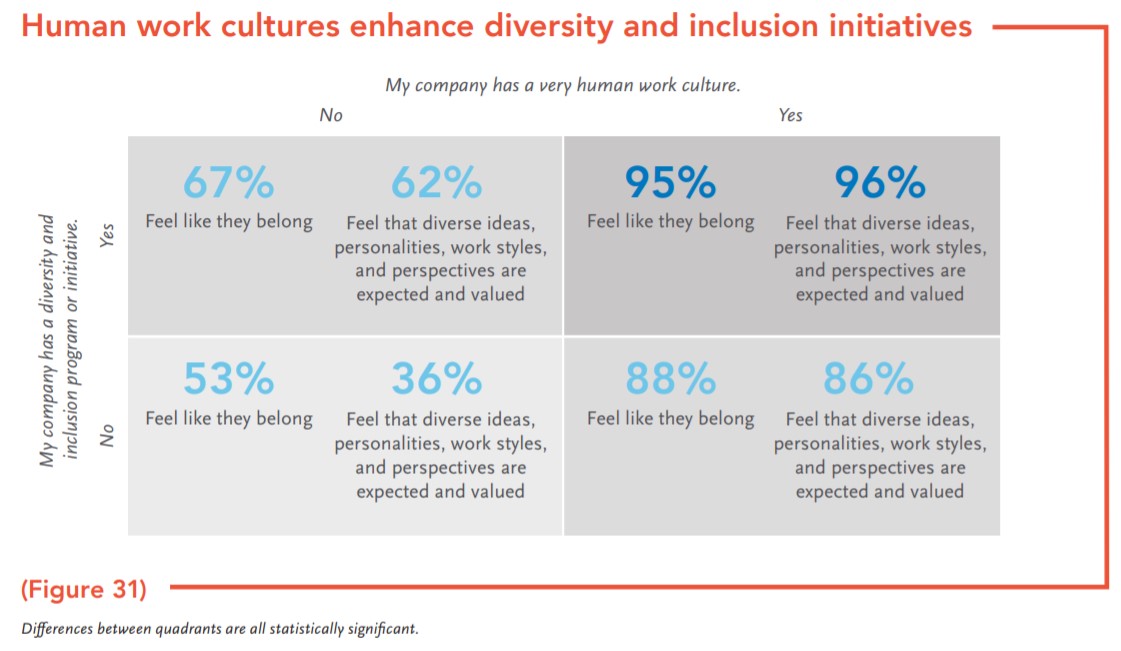Australia has traditionally perceived itself to be a country of egalitarianism – the land where everyone has a “fair go” at least insofar as socioeconomic status is concerned. If this were literally true there would be little difficulty for anyone to move (up or down) into a different socio-economic bracket, regardless of where one was born, and regardless of the socio-economic status of one’s parents.
However, in reality, public and private sector institutions do not really reflect the diversity of the Australian society at large as regards gender, ethnicity or socio-economic backgrounds. Of these, the issue of class (encompassing social origin and economic mobility) is the one which has been largely neglected or ignored by the diversity and inclusion strategies of private sector businesses. Accordingly, class distinctions and their impact are the focus of this article.
We examine the following propositions:
- Class distinctions are indelibly etched into Australian society
- Movement from lower to higher socio-economic status is difficult and beset by obstacles
- Private sector organisations have not been motivated to elevate class distinctions and the need to propel social mobility as priority components of diversity and inclusion strategies
- A whole swathe of Australians are unable to make their full contribution to the economy and society at large, because of social immobility
Classes and their Boundaries
Recent studies and emerging data show that class make-up in Australia is more complex and nuanced than is sometimes believed. There is compelling evidence that Australian society is segmented by class and that Australians know it only too well. However, an appreciation that classes exist within a society is very different from being able to say exactly how belonging to a specific class impacts one’s prospects economically and socially. The all-important question is, how easy or difficult is it in a given society to move from one class to another?
The Economics of Class Difference
The most common measure of income inequality across the globe is the Gini- coefficient which varies between zero and one. If every household had the same income the Gini would be zero (perfect equality). If one household had all the income the Gini would be 1 (complete inequality). In 2014, Australia had a Gini co-efficient of 0.337 in an OECD ranking of income inequality. The UK was worse than Australia at 0.356 and USA even worse at 0.394. Of 37 OECD countries, 22 had better Gini co-efficient scores than Australia and only 14 worse.

Australia is not directly comparable with every country that has a lower Gini co-efficient – because some of those countries are less wealthy or have different social systems. Nevertheless, Australia’s unfavourable position in the table highlights that economic (and by extension class) disparities are a harsh reality for many Australians.
Wealth Divisions
Apart from income differentials in Australia, the growth in household wealth has been a factor which increasingly separates classes as asset values, particularly property prices, have risen over the past two decades, shifting a greater proportion of the country’s wealth into the hands of the already affluent.
In 2016 the lowest quintile (20%) of Australia’s population owned under 1% (0.9) of the country’s private wealth while the top quintile owned 62% of the private wealth (ABS). This, of course, together with income disparities, widens the gap between different classes.

A third way of measuring equality in a society is by examining equality of opportunity. If affluence is mainly passed on from parents to their children in a society then intergenerational mobility is low.
The most common metric of economic mobility is the IGE (intergenerational elasticity). Again, the scale runs from 0 to 1. The closer to zero the score is, the greater the mobility.
A large-scale study in September 2017 (IZA Institute of Labor Economics) fixed the IGE for Australia at 0.409 – which means that economic mobility is not that easy in this country – or to put it in the words of the author of the study: “a substantial proportion of economic advantage is passed from parents to children in Australia”.
Class segmentation in Australia
Current views have made it clear that the orthodox division of classes into upper, middle and working is outdated and the notion that one’s class is determined solely by one’s wealth and the type of job one does is too simplistic to be a useful indication of class categorisation.
The French sociologist, Pierre Bourdieu, in 1984 developed a new approach to class. He suggested that class was determined by access to different types of ‘capital’. He identified these as economic, social and cultural capital.
- Economic Capital is a person’s accumulated wealth in property and savings.
- Social Capital represents the resources available through durable connections and institutionalised relationships which can be leveraged and which confer a benefit to those that have them, but a disadvantage to those who lack them.
- Cultural Capital comes in three forms: Institutionalised cultured capital: qualifications and credentials; objectified cultural capital: pictures, books instruments and machines that reflect not only wealth but the ability to appreciate those goods and profit from them; embodied cultural capital: tastes, lifestyles, skills and habits.
From 2011 to 2013 an extensive survey of over 161,000 respondents was conducted in the UK by BBC Science to identify existing classes in that society, based on the Bourdieu formulation. The survey identified seven separate classes in the UK. At the top is the elite, distinguished through its wealth and the other social and cultural accoutrements. At the bottom the ‘precariat or ‘precarious proletariat’ – the poorest, most deprived class. Between these are five middle and working classes. Unsurprisingly, British society was found to be characterised by distinct and fairly insulated classes.
In 2015, two researchers from ANU conducted a similar survey in Australia, though on a much smaller scale. Their conclusion was that the elite class was not to be found in Australia. They identify six separate classes which they label as:
- Precariat: have the lowest mean household income and lowest savings and poorest educational attainment
- Ageing workers: older, includes many pensioners, occupational prestige higher than precariat
- New workers: are in the younger age group and are employed full time; are financially better off and have better social and cultural capital than ageing workers
- Established middle class: have lower full-time employment rates than new workers but tend to have more accumulated wealth
- Emerging affluent class: come from middle class families but have above average educational qualifications so their income, assets and social capital are higher
- Established affluent class: have highest level of occupational prestige; have high levels of income, a significant asset base and wide and influential networks.
Twenty four per cent of the Australian populace are in the precariat or established affluent – but the 76% in the middle is, in fact, widely spread in terms of income and status. Any suggestion that Australia is close to a “classless” society is clearly misplaced.
Changes to the job market as a result of rapid technological developments will create even more obstacles for the less well-off who lack the skills and connections of their compatriots. Young people whose parents have a higher level of education are 26% more likely to see themselves as expert or creative users of technology compared to those coming from families with lower education. The increasing use of artificial intelligence and outsourced gig work is likely to impact most heavily on low socio-economic groups.
The impact of Class on job prospects
The upper echelons of Australian companies, universities, corporations and public institutions are noteworthy for their uniformity and homogeneity at the leadership and management levels. Firstly, there is a high degree of ethnic, gender and social origin uniformity. Of the 2490 most senior posts in Australia, 75.9 per cent are occupied by those of Anglo-Celtic background and 19 per cent have a European background. Of the ASX 200 group of chief executives,72.5 per cent have an Anglo-Celtic background and 23.5 per cent a European background (AHRC 2018):74% of ASX board members are male; two thirds of chief executives in the ASX 100 companies went to private schools the reverse statistic of what applies to the population as a whole (AFR, 2014).’
All people possess a multitude of personal attributes. Some of these may operate to provide either advantage or disadvantage. This is the well- known phenomenon of “intersectionality”. At the lower end of the economic spectrum there is often a noticeable convergence of attributes pertaining to gender, ethnicity, disability, national and social origin and class, which might result in discrimination. For the economically-disadvantaged these interlacing attributes act as multi-dimensional hurdles which stand in the way of socio-economic upliftment.
There is a good deal of anecdotal evidence to indicate that when applying for a job in Australia, one’s accent, area of residence, school, university, social activities and network can play a positive or negative role depending on the biases of those conducting the interviews.
One of the most sought-after characteristics which companies look for in job candidates is whether they are likely to be a “cultural fit”.
Too often, however those assessing candidates are marking out characteristics which make him or her “just like us “. This “affinity bias” can impact recruitment and hiring both on the demand and supply sides of the potential employee pipeline. A survey conducted on behalf of three top- tier law firms in 2017 showed that of the candidate pool of 1650, 13 per cent came from the top 1 per cent of Australian schools and a further 52 per cent came from schools amongst the top 10 per cent in the country.
Social mobility through the Workplace
In the UK the need to incorporate social and economic mobility as integral features of diversity and inclusion programs is not new. According to the Social Mobility Foundation by 2018 around 1 in 5 of the UK’s major firms are setting targets for social mobility.
The Social Mobility Foundation is a government-supported organisation which has established the Social Mobility Index which establishes a numerical ranking of UK employers based on the actions they are taking to give work opportunities and progressing talent from all backgrounds .Being voted onto the annually published index of the 50 best companies for social mobility is a highly prized honour and has led to organisations remodelling their diversity and inclusion strategies to incorporate a focus on this dimension.
Diversity Programs and Social Mobility
It may well be that class lines differ between the UK and Australia and that therefore methodologies in the one are not appropriate for the other. However, each faces the same problems of increasing wealth disparities and declining opportunities for social mobility. It is therefore instructive that the UK has decided to tackle systematically the issue of limited access by disadvantaged socio-economic groups in the best-paying sectors of the economy.
Workplace diversity and inclusion strategies in Australia have focused on changing the employee profile primarily with reference to attributes such as race, ethnicity, gender and disability. Class, and socio-economic mobility are sometimes mentioned as items in a list of attributes which qualify or may be relevant in constituting a diverse employee base. However, there do not appear to have been any attempts by either the public or private sectors in Australia either to articulate social mobility as a diversity goal or to consider whether class and social mobility should be priority elements in a diversity and inclusion strategy.
While lower class socio-economic status frequently intersects with other personal attributes, this does not mean that diversity initiatives aimed at gender or ethnicity will automatically uplift those at the lower end of the economic spectrum. Quite the reverse is true. Being stuck in a disadvantaged socio-economic stratum means that one will not get the benefit of initiatives to progress women and diverse ethnicities because their reach often extends only as far as a few upper economic layers.
Case Studies from the UK
Grant Thornton – Linking the recruitment process to in-role performance In 2013, Grant Thornton removed all academic entry requirements for all of their entry level talent programmes; graduate, school leaver, placements, internships and work experience. They do not stipulate any minimum grade requirements and instead use a ‘balanced screening scorecard’ that looks holistically across a wide range of achievements (personal, professional and academic) and assesses candidates based on their overall potential and connection with the firm’s values.
In addition to this change, the firm also: – Invested heavily in coaching for students who had no access to skills training; created an online community called ‘I’ve Applied’ to provide a forum for candidates to interact with each other and their recruiters; and – applied aptitude testing so as not discriminate on the basis of gender, ethnicity or socio-economic background.
The result: 20% of the firm’s annual intake is now people that would previously have been screened out
KPMG – collecting and publishing detailed socio-economic dataKPMG was the first business in the UK to publish detailed workforce data outlining the socio-economic make-up of the firm. The firm published comprehensive data, which measured employees’ parental occupation and education and the type of school employees attended. KPMG also shared graduate and school leaver socio-economic data from the past three years, demonstrating the efforts made by the firm to ensure a more diverse talent pipeline.The result: Through capturing this data, the firm has been able to monitor the impact of the work they have undertaken to boost social mobility. For example, their data shows that year-on-year they have recruited more school leavers from disadvantaged backgrounds. In 2014, 12% of school leaver recruits were eligible for free school meals, and this rose to 18% in 2016.
Conclusion
There is mounting evidence that Australia’s class distinctions are, if anything, solidifying and that moving from a lower to a higher socio-economic group is not becoming any easier.
Governments have a role to play in addressing this problem at a macro level. However, business, the professions and other organisations can play their part in facilitating social mobility by seeking employees from every stratum of Australian society. If this is to remain the land of the “fair go” then businesses must step up to the plate and ensure that every Australian can maximise his or her opportunities and develop their talents to the utmost.
FOR OUR READERS:
As there is a dearth of information available in the public domain on social mobility in D & I strategies in Australia, can you spend a few moments and share with Symmetra what your organisation is doing on this front so we can report back on the information gathered in the next Quarterly:















